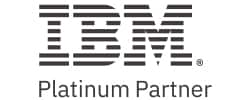August 31, 2023
How IT Cost Optimization Strategies Promote Business Value
Initiatives that drive cost efficiencies can help align IT, finance and lines of business and build a competitive advantage.
IN THIS ARTICLE
Strategies for Sustainable Cost Optimization
Solutions and Services for Efficient IT
Strategy and Planning Are the Foundation of IT Cost Optimization
As the world continues to emerge from the global pandemic, many organizations are recognizing the importance of IT, not only in driving operational efficiencies and value but also in contributing to top-line revenue. With continued investments in new technologies such as cloud solutions, automation and artificial intelligence, IT can further build its reputation as an organizational value and profit generator. But this higher profile means IT departments must be mindful of their alignment with organizationwide financial targets and other business objectives. Conditions are ripe for IT to form business-centric partnerships and demonstrate sound financial stewardship, whether the organization is experiencing financial bounty or bust.
Organizational leaders have many avenues for improving cost optimization. Like most forms of improvement, optimization is an ongoing effort. Continuous optimization involves planning as well as strategic and adaptive activities that aim to improve efficiency, reduce pricing, eliminate waste and enable effective budget management However, many organizations don’t approach optimization in this manner.
Attention to optimization generally peaks when organizations face economic challenges. An organization’s spending behavior can be highly influenced by factors such as interest rates, labor markets and regulations. These external forces often drive adaptive actions, either contractionary or expansionary, with the objective of minimizing margin deterioration or capitalizing on market growth opportunities.
A common response includes steps to rapidly cut costs, sometimes involving enterprisewide operating expense reductions and tightened capital spending. While these externally motivated actions could have positive short-term effects, long-term value gains are less likely. Ultimately, long-term cost optimization is more about where you spend than how much you spend.
A strategic approach to cost optimization can bring greater and more lasting benefits in support of current and long-term business goals. Rather than short-term adaptive actions, strategic cost optimization involves continuous efforts to improve business value and build resilience.
Business objectives, the organization’s current state and external forces will likely dictate the initial approach to cost optimization. The key to lasting impacts is a broad-based plan in which optimization becomes an ongoing commitment.
Key Areas for IT Cost Optimization
As organizations begin their journey toward cost optimization, they should take a multipronged approach that includes planning, strategy and tactical measures.
Cloud
An effective cloud strategy can help IT teams match workloads to the most suitable resources. It can also help manage costs by resolving licensing inefficiencies and providing clear visibility into cloud use and expenditures.
Services
A third-party partner can help organizations address the high cost of recruiting and retaining skilled IT professionals. Managed service providers also enable in-house staff to focus on the most valuable tasks.
Mergers and Acquisitions
Adding new operations can bring significant value, but organizations must plan effectively to integrate IT systems, drive innovation and maintain security.
A strategic approach is essential for effective cost optimization. As organizations strategize to align their IT resources with business objectives, they must maintain clear visibility into wide-ranging IT systems and services across numerous departments, including new operations brought in as part of a merger or acquisition.
OPEX BUDGET RATIONALIZATION
Operating expense (OPEX) budgeting is foundational to cost management and optimization. Budgets establish spending boundaries and accountability. Methods to develop budgets range from a zero-based approach to budget baselines rolled forward from the previous year’s actual expenses.
Allocating annual expenses to drive the greatest value should be a primary budgeting objective. Yet, many budgets simply carry forward expenses from year to year with little validation of ongoing value. CDW can help structure budgeting methods to bring cost optimization to the forefront. We can institute OPEX budget rationalization as a stand-alone or in combination with investment analytics to broaden optimization efforts.
INVESTMENT ANALYTICS
Most organizations operate with finite discretionary resources and must determine what investments will yield the greatest benefits. Formal processes to evaluate, prioritize, select and fund initiatives are key activities to promote cost optimization.
Business vision and goals are essential information for establishing investment evaluation criteria. Standard tools and templates should guide prioritization and selection activities, with final funding decisions based on committee consensus. Benefits validation is an important post-implementation step to confirm that the return on investment meets expectations. CDW services can help design and implement a sustainable investment analytics framework and support initiative-specific decisions with modeling and analysis.
CLOUD AND HYBRID IT FINANCE
Cloud and hybrid IT change the dynamics of cost optimization. With cloud migrations and multiplatform environments, resources and expense drivers typically multiply, increasing complexity around usage and cost visibility. As operations scale, optimization becomes critical to ensure cost efficiency.
Cloud cost optimization requires a multifaceted approach that involves utilization analysis, resource pricing and discount considerations, real-time usage monitoring and governance. A coordinated plan that begins with cloud use and cost visibility is essential to success. FinOps was founded to address cloud financial management. CDW has services that support FinOps adoption, meeting clients at any stage in their journey.
COST TRANSPARENCY AND METRICS
Transparency brings meaning to IT cost data in terms of ownership, expense classification, resource composition and cost drivers. At higher levels of maturity, transparency associates costs with services, users and business capabilities.
Meaningful cost data can be modeled, compared and explained on a total or unit metrics basis and can identify technical and business cost drivers. Unit metrics, mapping to activities that drive resource usage, are essential for interpreting and optimizing IT costs.Ultimately, transparency connects IT costs to business value. CDW cost transparency services can take an organization’s cost optimization roadmap to the next level.
COST BENCHMARKING AND FINANCIAL HEALTH CHECKS
IT cost benchmarking and financial health checks can initiate cost optimization efforts, particularly when an organization seeks better knowledge about spending and financial processes. Benchmarking helps identify cost reduction opportunities that are initially focused on adaptive efforts to eliminate spending.
These entry points can provide data for cost optimization planning and can pave the way for future growth and maturity. For example, organizations can use IT benchmarking expense classifications to develop cost transparency frameworks and reporting models. When current-state assessment is the right starting point for cost optimization, CDW IT cost benchmarking and financial health check services can jump-start optimization efforts.
CLOUD STRATEGY
A sound cloud strategy is FinOps-aligned and focuses on optimizing costs while ensuring financial governance and operational efficiency. Many organizations use reserved instances, or RI, committing to a specified level of cloud usage. By implementing RI lifecycle management, organizations can achieve long-term cost savings.
Cloud strategy should rightsize workloads by monitoring resource utilization and adjusting to eliminate waste and maximize efficiency. Scheduled automations can streamline resource provisioning, aligning capacity with actual use and anticipated demand to reduce costs. Strategic storage tiering moves some data into cost-effective storage tiers. By integrating these methods into a cloud strategy, organizations can align financial objectives with operational goals.
MANAGED SERVICES STRATEGY
Rising employment costs and talent shortages highlight another potential optimization focus: managed services. Having a third-party partner provide managed services allows an organization to keep pace with system upgrades without the challenges and costs of hiring and training new employees for these systems. Managed services can extend across IT operations, including cloud, colocation, connectivity, security and support.
Managed services are billed as monthly operational expenses, allowing for predictable spending tied directly to operational upgrades, making it easier to show direct ROI. Further, by handing off routine tasks to a provider, IT staff can remain focused on valuable projects that drive the business forward.
M&A STRATEGY
Mergers and acquisitions enable organizations to hasten their growth and enhance their core lines of business. However, organizations that engage in these transactions may treat IT integration as an afterthought. A focused strategy for the integration of IT systems can drive business value. By aligning the IT resources of merging entities, IT leaders can drive efficiency and avoid problems.
To optimize this process, organizations should develop a strategy that encompasses assessment, planning, integration, security, innovation and adjustments. A third party can provide expertise in these areas by, for example, conducting vulnerability scans and health checks to develop an effective approach to security.
Learn how CDW can help your organization better manage its IT environment to optimize costs.
Elements of an Effective Cloud Strategy
Productive ways to address cloud challenges include:
Cloud Management Platforms: A centralized management platform from vendors such as Inscape or Harness.io can enable organizations to better handle routine tasks and maintenance and more efficiently allocate cloud resources.
Application Modernization: Implementing new technology can lead to technical debt, requiring organizations to rework and modernize applications. Updating and improving legacy applications can help an organization take advantage of cloud efficiencies.
Automation and Orchestration: Layering orchestration across an organization's cloud environments provides a way to efficiently allocate resources. Automation technologies reduce the manual efforts involved in provisioning and managing complex environments.
Serverless Architecture: With this approach, in which code execution is fully managed by a cloud provider, organizations are charged only for the server space they use, and development teams are free to focus on optimizing application design.
Cloud Centers of Excellence: Building a cross-functional team to oversee governance rules and procedures can help an organization drive broad optimization efforts. Greater awareness and oversight of resources leads to greater cloud efficiencies.
In times of economic uncertainty, it can be challenging for organizations to see the best course of action. A sober, strategic perspective can help leaders make smart decisions about which cost optimizations will yield the best results. A third party that has industry experience and partnerships, as well as service offerings, can guide organizations to strategic cost optimizations that will position them to weather current economic conditions and to thrive in the future.
CDW offers a number of valuable services that can help organizations simplify technology financing.
1
CDW Financial Services
As the needs of an organization evolve, CDW can help finance its technology investments to maximize business value while minimizing capital impact. Our proactive approach will help organizations transition to the cost-efficient services their business and customers demand. We can identify areas where business leaders can free up capital for investments that make better financial and business sense for an organization. We can match software and support contracts to usage rates, rather than having them paid for up front. We offer a robust variety of funding options that can be customized to meet an organization’s specific business budget and needs.
CDW can also assist with cost optimization via a business-as-usual analysis, which calculates the multiyear costs of a particular business initiative. This can guide organizational leaders toward the cost optimizations that offer the best value down the line. CDW can also provide modeling consultation for large-scale IT initiatives, helping IT teams to streamline efforts and lower costs in the development and implementation of new technologies.
2
CDW Cloud Partnership
Cost optimization must be a management focus for today’s complex cloud environments. CDW’s experience in helping organizations navigate change management and reduce legacy workloads is key to our ability to deliver better performance and reduce cloud expenses.
As a managed service provider for the Amazon Web Services, Microsoft Azure and Google Cloud platforms, CDW’s Multicloud Services are able to develop, manage and support a cohesive cloud strategy across platforms. We have more than 30 years of experience supporting cloud and data center technologies. Our large staff of certified technical specialists and our longstanding, deep relationships with cloud providers position CDW as a trusted partner that can deliver cloud cost optimizations.
3
CDW Amplified™ Services
Managed services can be an integral part of a sound cost optimization strategy. By shifting some operations to a managed service, organizations can reduce staffing expenses and overcome a skills shortage. This approach frees up capital and allows in-house staff to focus on supporting lines of business and other critical operations in the organization.
CDW Amplified™ Services offer managed services in key operational areas. This includes colocation center services, where we deploy and manage cloud environments, applications and experience in secure and highly redundant facilities. It also includes managed cloud services for the migration, integration and management of cloud resources. We also offer connectivity services such as global WAN, software-defined WAN and managed networks; security services such as vulnerability assessments, incident response and threat hunting; and support services, both remote and onsite.
4
CDW M&A Support
Any merger and acquisition activity in today’s uncertain economic climate should be focused on cost optimization. To get the process started with the right focus, CDW offers M&A Strategy Workshops. In these, our consultants partner with organizations to develop comprehensive integration strategies, conduct current-state reviews, manage future-state envisioning, sketch out roadmaps and engage in thorough risk and cost assessments.
CDW offers additional support for the M&A integration process. We have the resources and expertise to assist in data storage and migration, and can help organizations prepare and stand up new networking and data center infrastructure. Our experienced staff can also help navigate regulatory compliance and risk management, providing cybersecurity services to keep data safe and compliant.
Cost Optimization and Tech Adoption
Snow Software recently released its 2023 IT Priorities Report, which polled more than 800 IT leaders from around the world to assess their top concerns as organizations move through a hazy economic landscape. Here are their top four IT priorities:
33%
Reducing IT costs
28%
Reducing security risks
26%
Delivering digital transformation
26%
Adopting new technology to improve day-to-day operations
Organizations take varied approaches to cost optimization. Some may lean into driving better performance and efficiencies with IT solutions they have already deployed. Others may look for ways to immediately deliver cost savings. Still others may focus on the long-term picture, investing in strategic growth. Each of these approaches can help organizations achieve their business objectives, but careful planning is important to achieve optimal performance.
Long-term financial considerations should be key priorities for organizations as they take a strategic approach to optimizing their IT costs.
Long-Term Financial Alignment
Some organizations may take a short-term approach to cost optimization, cutting costs in areas with few dependencies to deliver a significant impact immediately. The key is to avoid actions that, while driven strictly by short-term savings, are not aligned with long-term strategic interests.
For organizations positioned to continue investing in long-term growth, Gartner’s bimodal IT strategy offers valuable guidance. It invests resources in both Mode 1 projects (which focus on core system maintenance, stability and efficiency) and Mode 2 projects (which focus on innovating and differentiating the business). This kind of strategic IT investment goes hand in hand with wider cost optimization efforts, which take on greater importance as the entire organization seeks to deliver ROI and justify budget needs.
In developing an IT plan for cost optimization, alignment with an organization’s overall financial outlook is important. A strong relationship and effective communication between the CIO and the CFO, built on transparency, is paramount in challenging economic times. Rather than have the CFO team drive the entire conversation on cost optimization, a better approach is to develop an IT-driven plan.
Developing an IT Cost Optimization Plan
The process for developing a cost optimization plan can be broken down to three broad steps:
- Plan and define goals: Organizational leaders should analyze their strengths, weaknesses, opportunities and threats, then assess budget constraints and parameters to determine where changes can be made. Next, leaders should identify the organization’s cost optimization goals and an approach to achieving them.
- Determine cost optimization initiatives: Optimization efforts should focus on four key IT operational areas: vendor management, asset optimization, project prioritization and workforce optimization. Leaders should determine priorities that would remain untouched as well as opportunities for optimization, such areas for consolidation, reduction or elimination. Some projects may be rescoped, canceled or accelerated to drive greater cost optimization. Leaders should build a list of these optimization opportunities.
- Prepare an action plan: IT and business leaders should closely scrutinize the list to prioritize optimization initiatives, which will prepare them to build out a cost optimization roadmap. This should include a plan for communicating the cost optimization strategy (and its subsequent results) to important stakeholders.
Story by John Carcone, Kim Cuthbert, Neil Graver, Jason Helle, Angie Pederson, James Watczak, David Wharton




